Abstract
The phagocytosis of 51Cr or 131I-labelled suspensions of heat-killed Salmonella enteritidis by the R.E.S. has been studied in mice and the results compared with the kinetic laws which govern the clearance of stable colloid suspensions.
Clearance of bacteria followed an exponential function for the first few minutes, during which about 60 per cent were phagocytosed. Thereafter, the rate of clearance became progressively slower. The maximum extraction by the liver and spleen was calculated as only 48 per cent. Previous administration of heparin slowed the initial clearance of all doses of bacteria exceeding 5 × 107 per 20 g. No inverse relationship between dose and rate of clearance could be shown in either heparinized or normal mice. The greatest proportion of bacteria (70–80 per cent) were taken up by the liver. Bacteria were phagocytosed in preference to carbon particles, but were taken up less readily than heat-denatured albumin (CA). Blood clearance was promoted greatly by previous injection of specific immune serum and slightly by normal guinea-pig serum.
Further investigations suggest that apparent slowing in clearance is due to the fact that not all members of a bacterial population are equally susceptible to phagocytosis.
Full text
PDF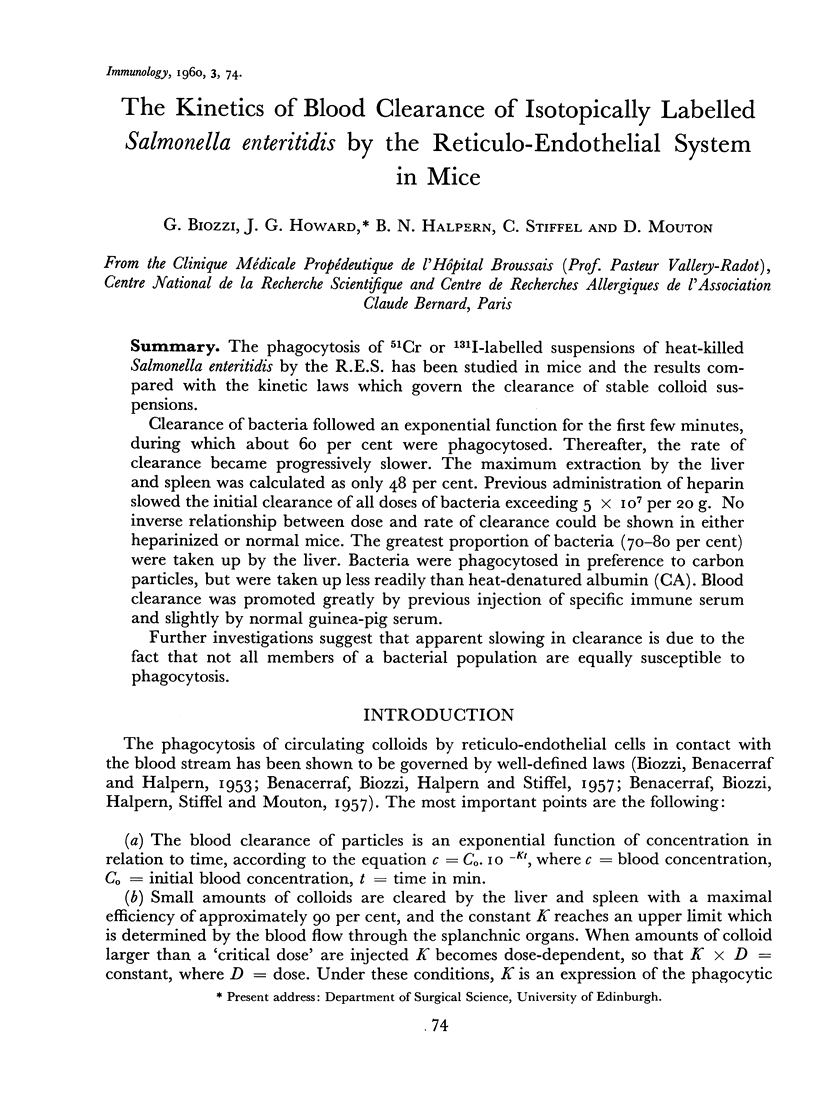
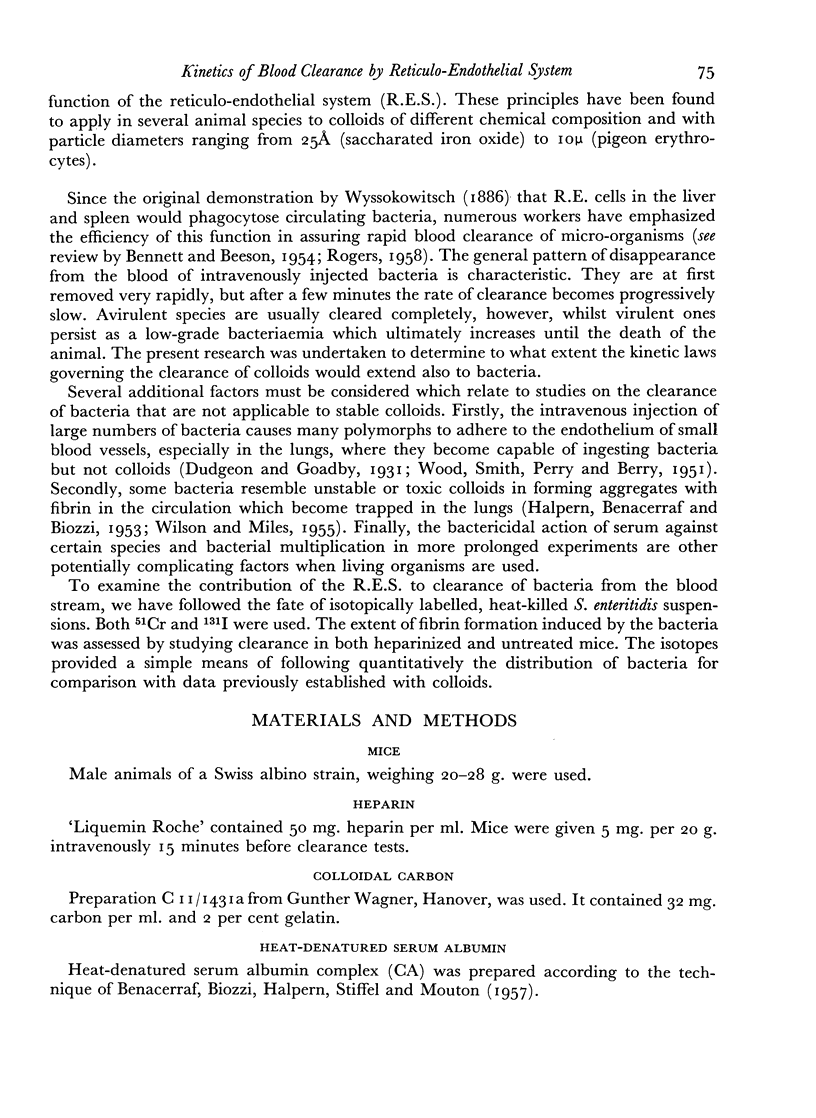
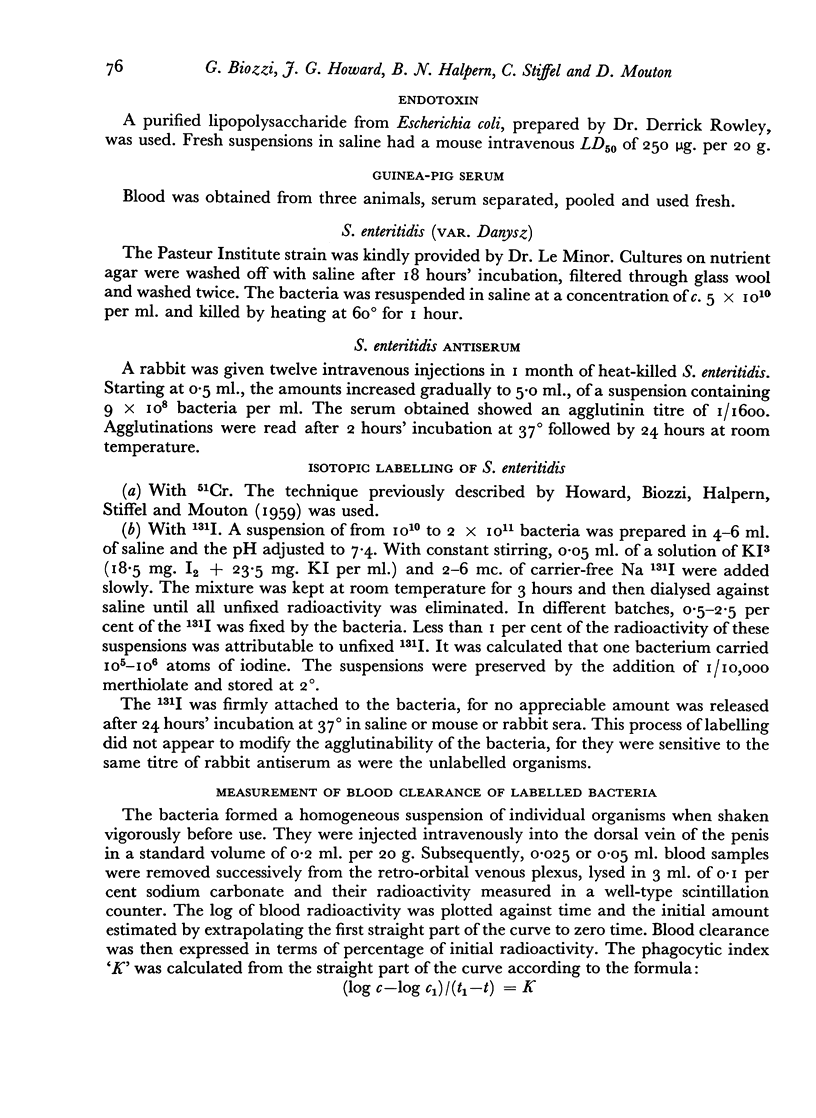
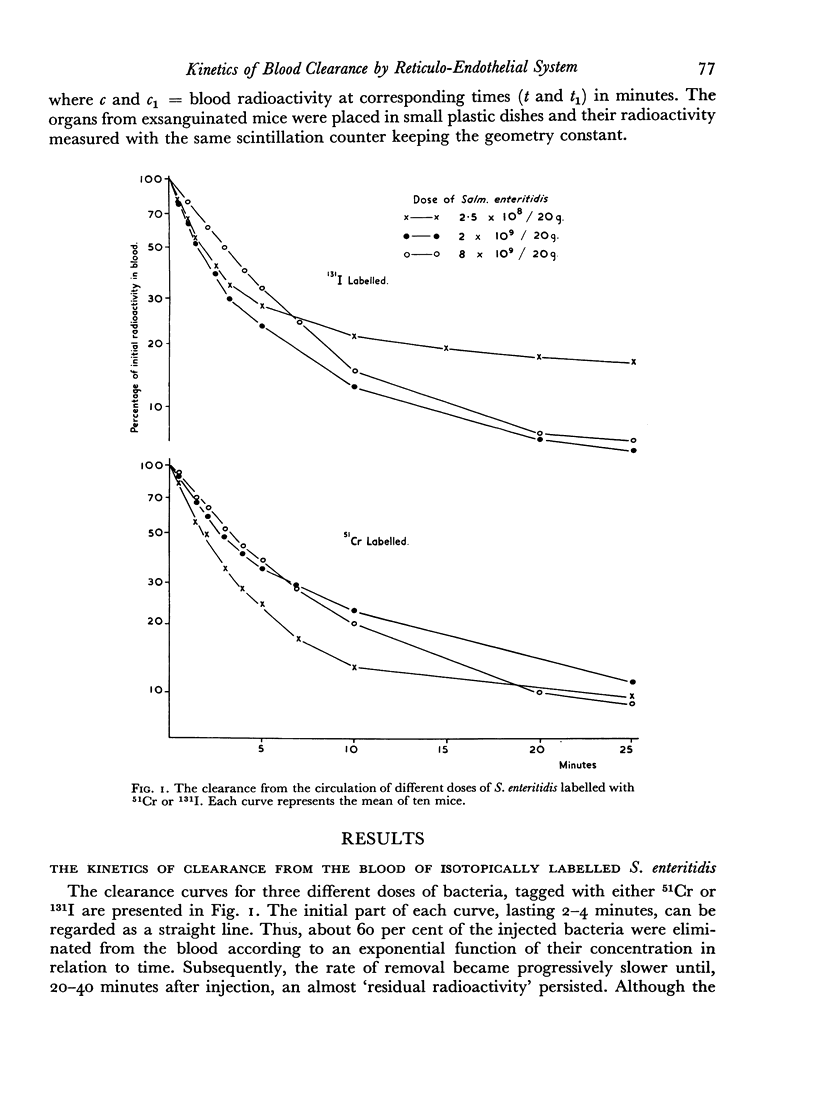
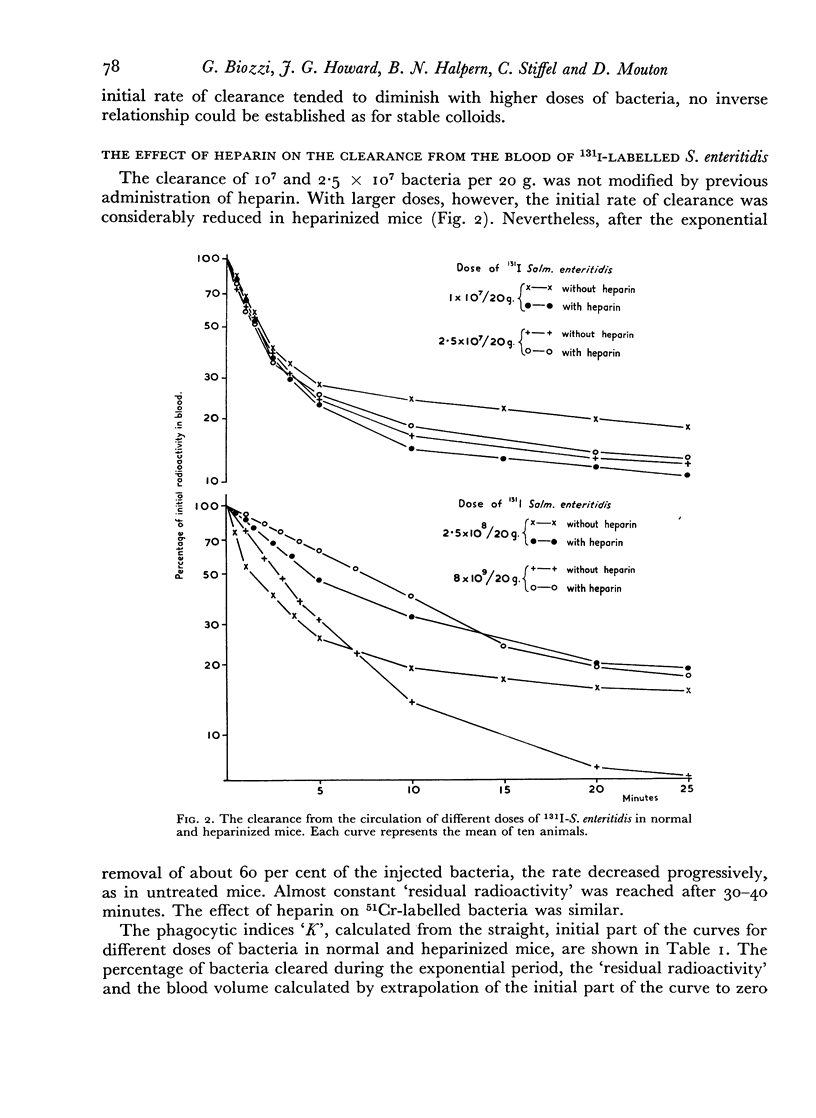
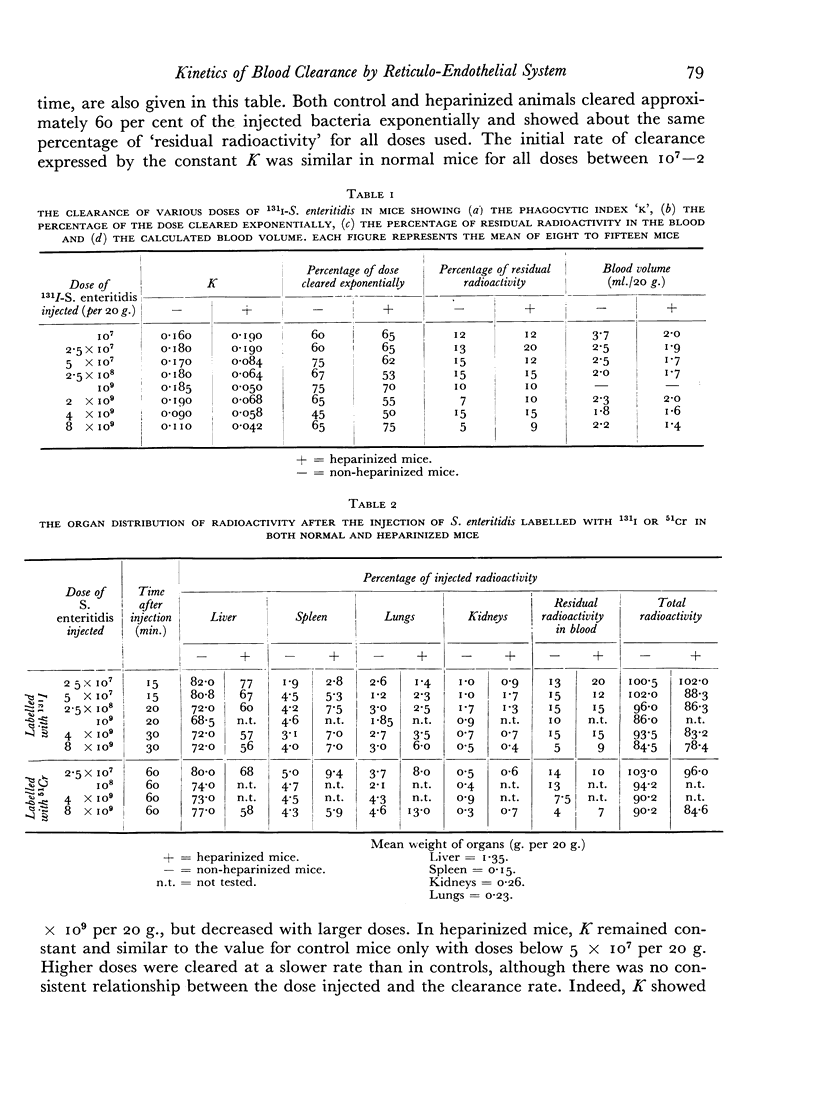
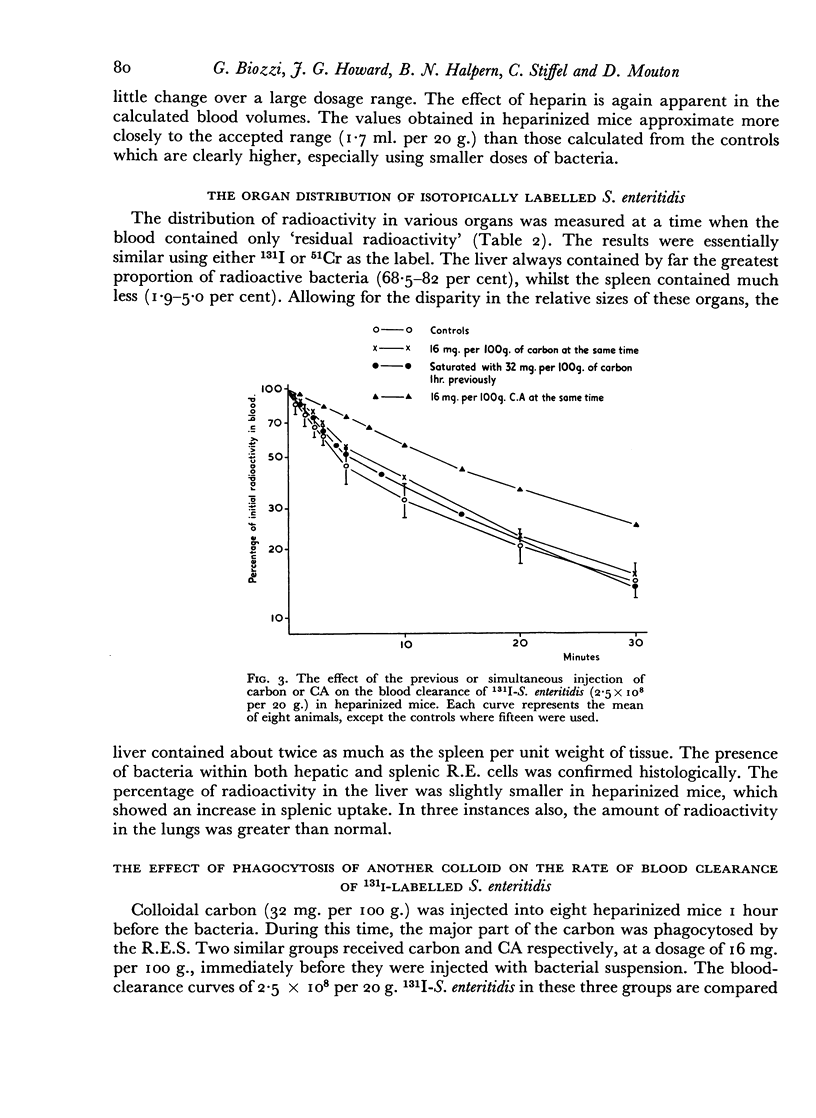
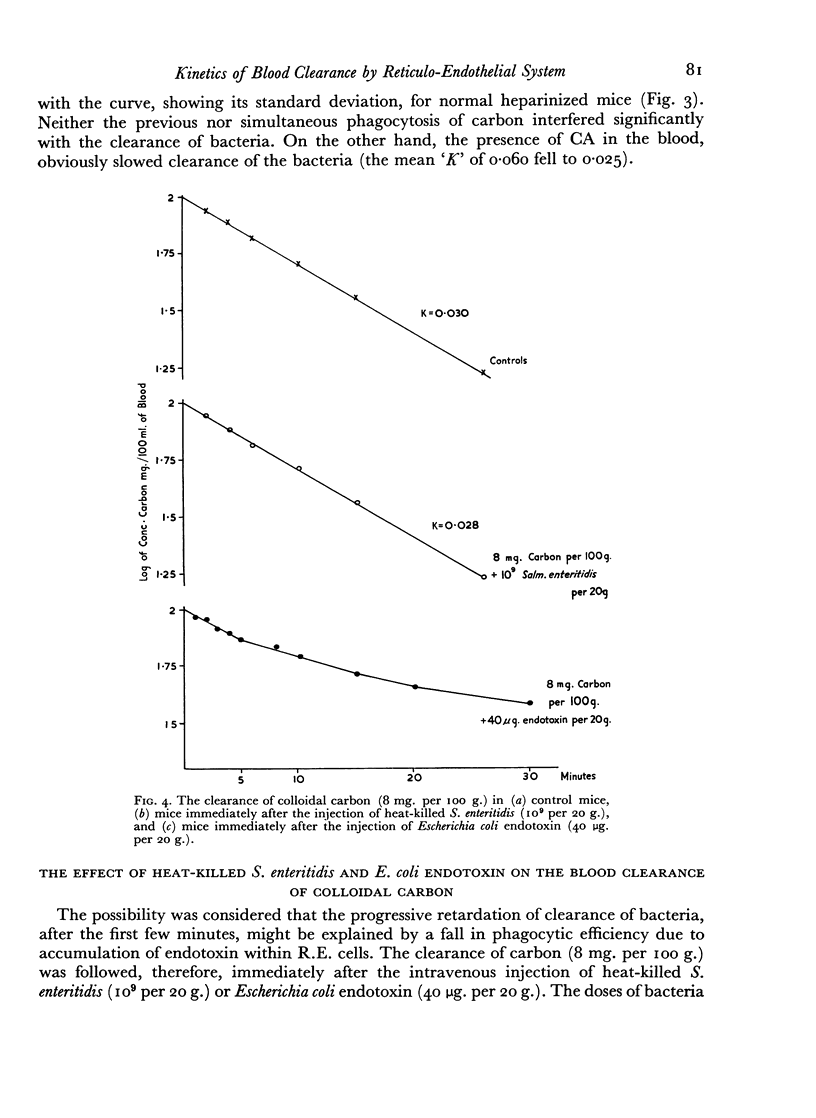
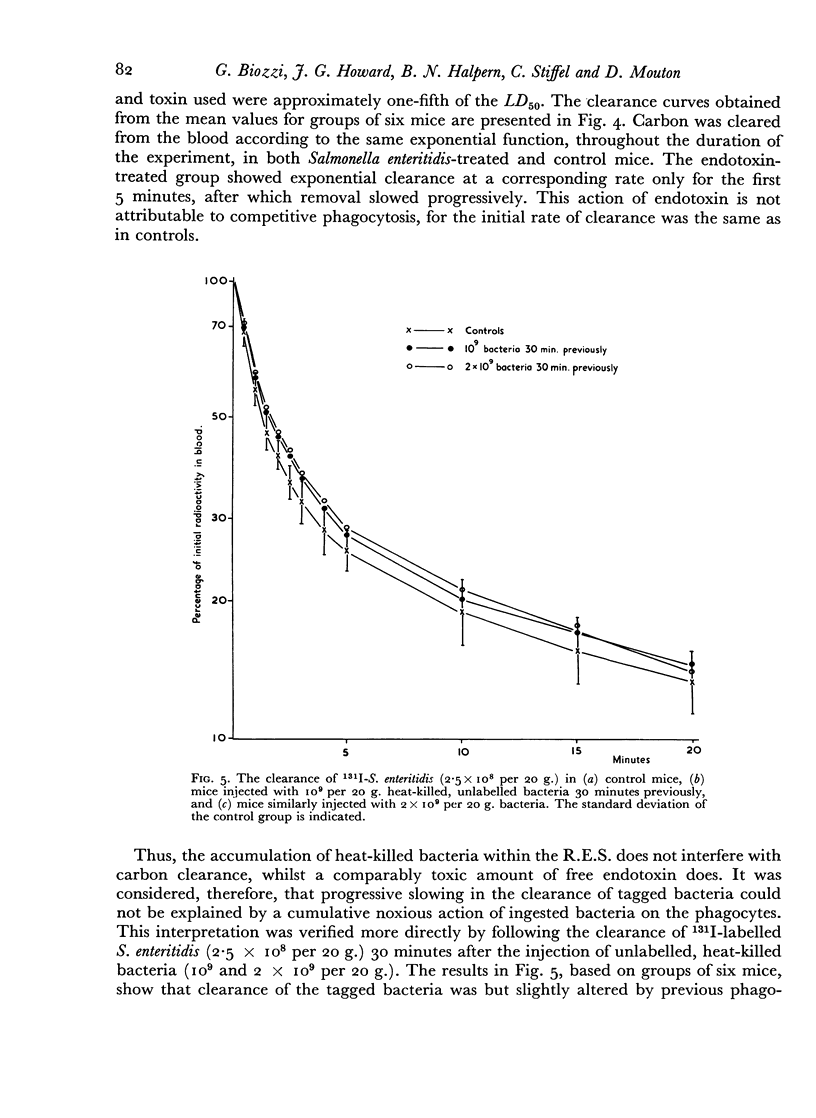

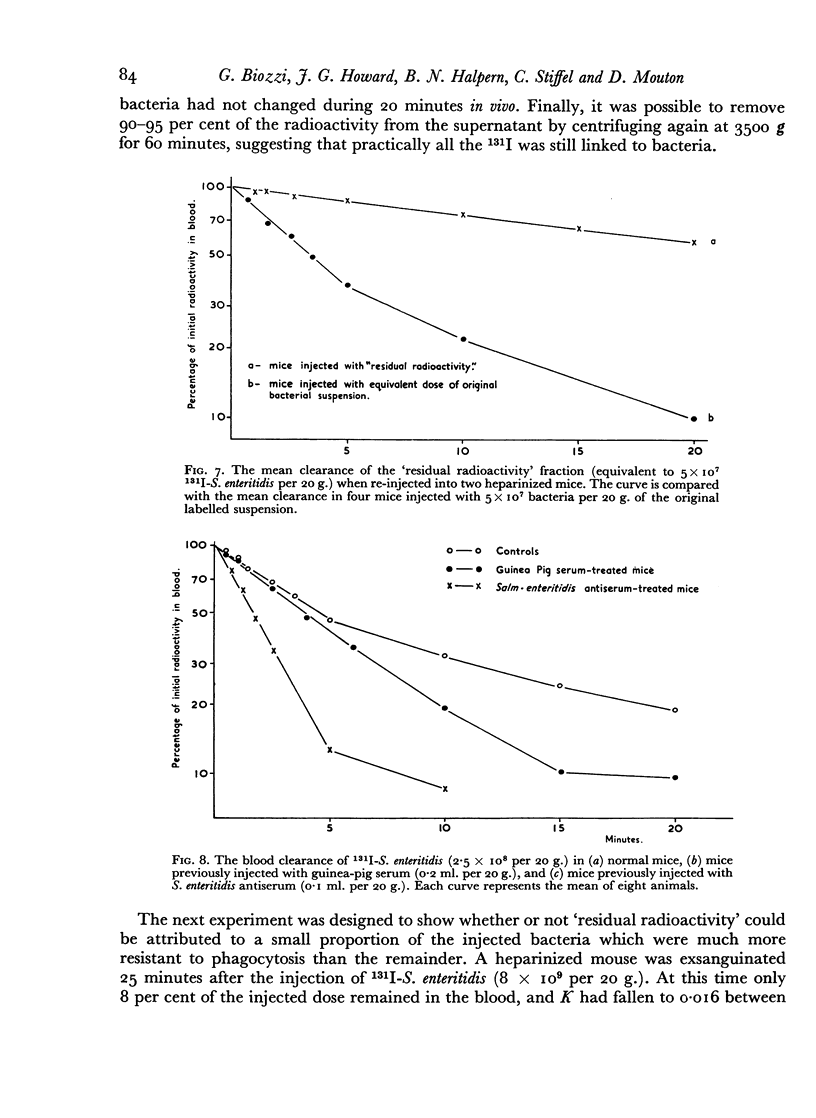

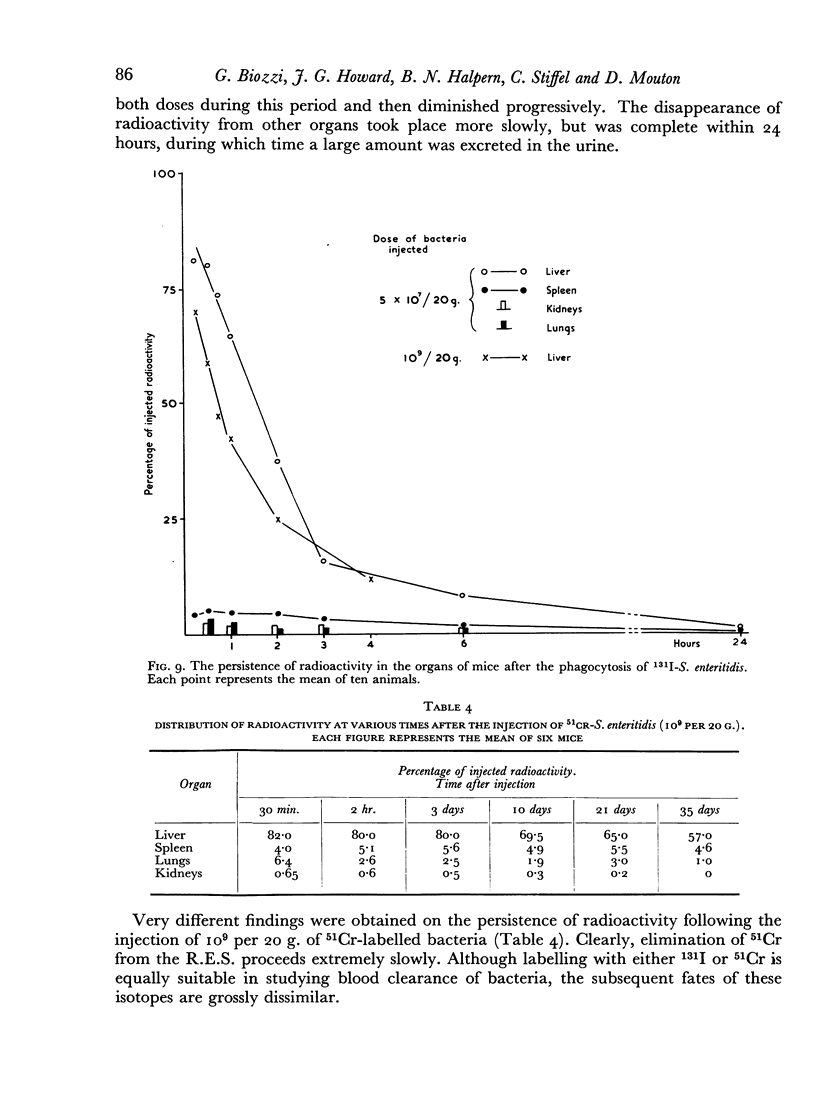
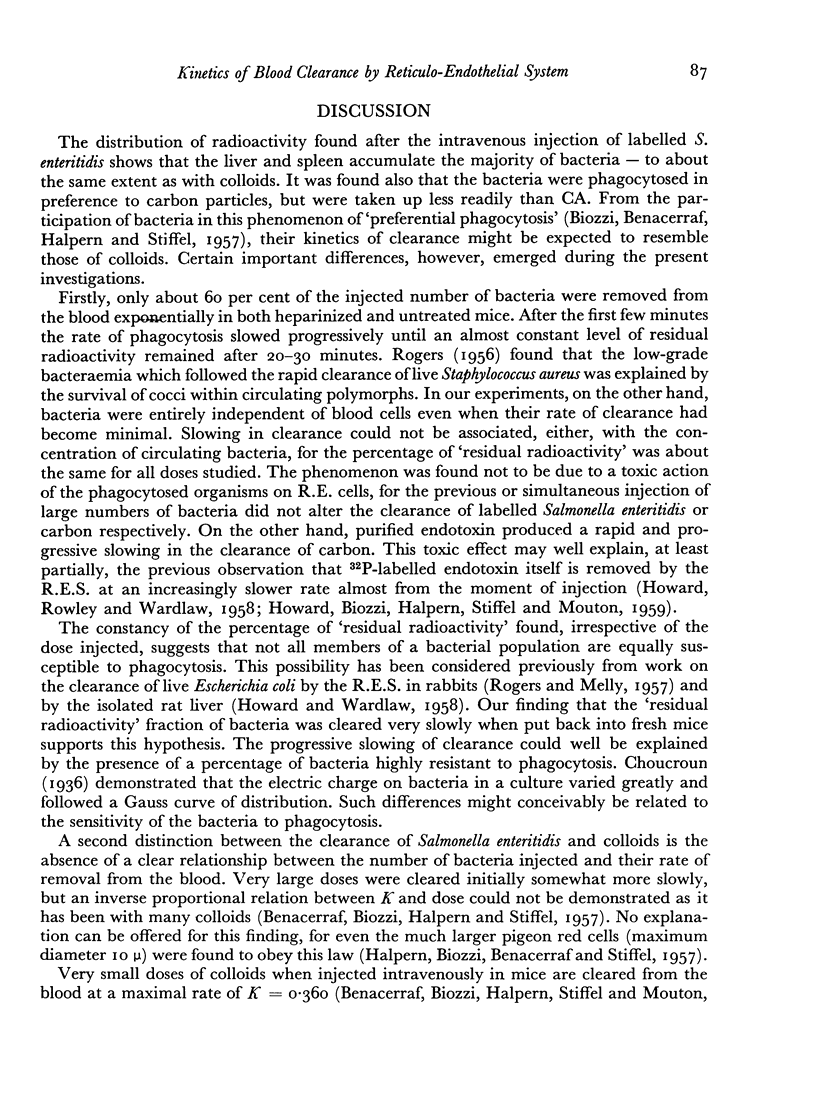
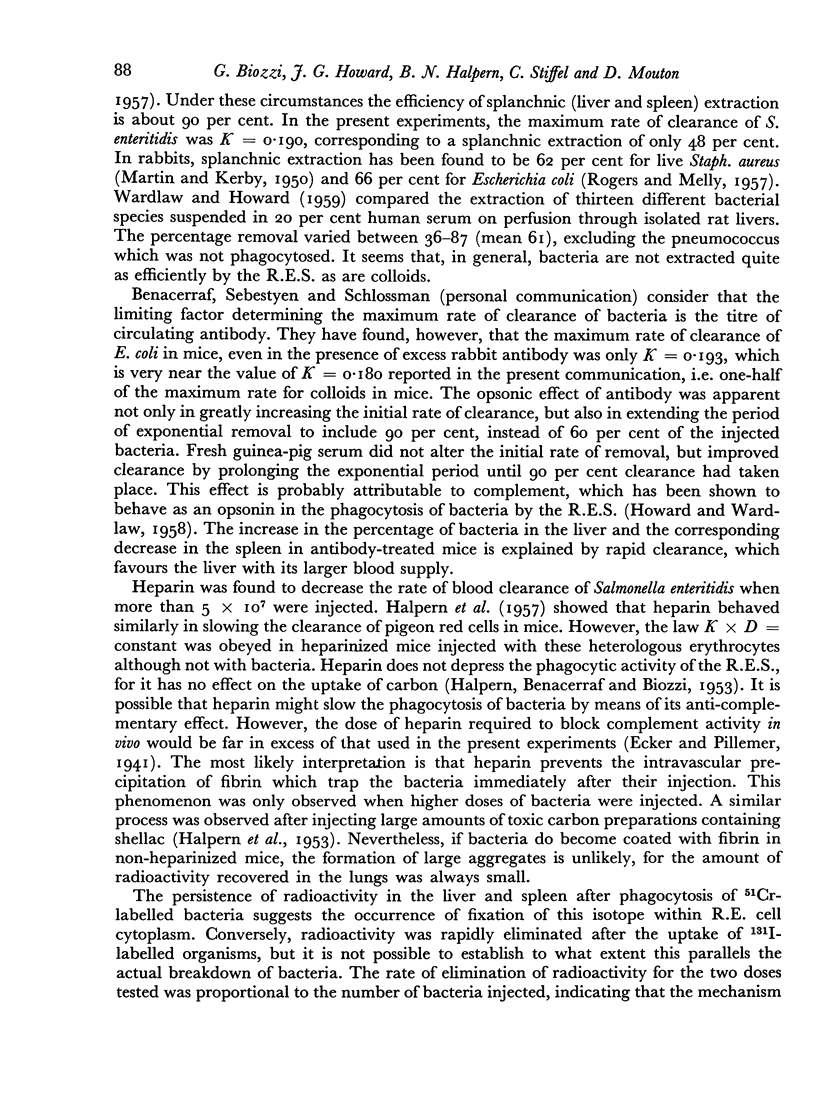
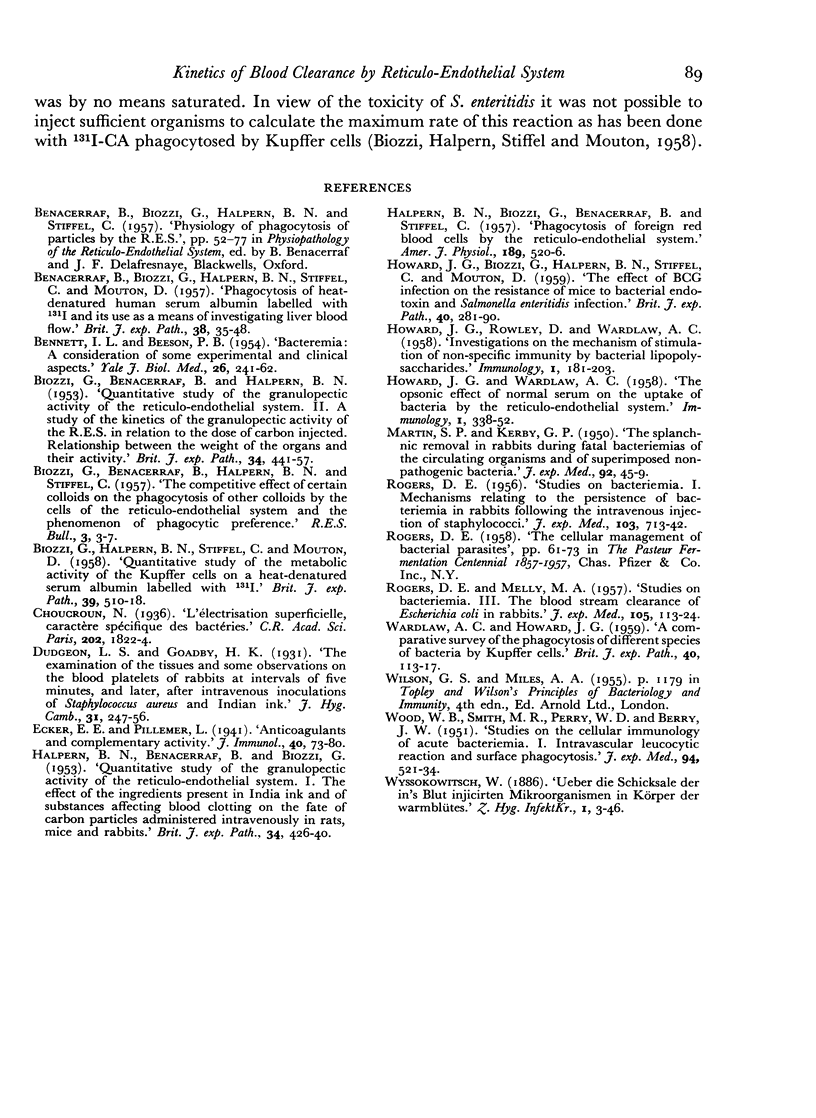
Selected References
These references are in PubMed. This may not be the complete list of references from this article.
- BENACERRAF B., BIOZZI G., HALPERN B. N., STIFFEL C., MOUTON D. Phagocytosis of heat-denatured human serum albumin labelled with 131I and its use as a means of investigating liver blood flow. Br J Exp Pathol. 1957 Feb;38(1):35–48. [PMC free article] [PubMed] [Google Scholar]
- BIOZZI G., BENACERRAF B., HALPERN B. N. Quantitative study of the granulopectic activity of the reticulo-endothelial system. II. A study of the kinetics of the R. E. S. in relation to the dose of carbon injected; relationship between the weight of the organs and their activity. Br J Exp Pathol. 1953 Aug;34(4):441–457. [PMC free article] [PubMed] [Google Scholar]
- HALPERN B. N., BENACERRAF B., BIOZZI G. Quantitative study of the granulopectic activity of the reticulo-endothelial system. I. The effect of the ingredients present in India ink and of substances affecting blood clotting in vivo on the fate of carbon particles administered intravenously in rats, mice and rabbits. Br J Exp Pathol. 1953 Aug;34(4):426–440. [PMC free article] [PubMed] [Google Scholar]
- HALPERN B. N., BIOZZI G., BENACERRAF B., STIFFEL C. Phagocytosis of foreign red blood cells by the reticulo-endothelial system. Am J Physiol. 1957 Jun;189(3):520–526. doi: 10.1152/ajplegacy.1957.189.3.520. [DOI] [PubMed] [Google Scholar]
- HOWARD J. G., ROWLEY D., WARDLAW A. C. Investigations on the mechanism of stimulation of non-specific immunity by bacterial lipopolysaccharides. Immunology. 1958 Jul;1(3):181–203. [PMC free article] [PubMed] [Google Scholar]
- HOWARD J. G., WARDLAW A. C. The opsonic effect of normal serum on the uptake of bacteria by the reticulo-endothelial system; perfusion studies with isolated rat liver. Immunology. 1958 Oct;1(4):338–352. [PMC free article] [PubMed] [Google Scholar]
- ROGERS D. E. Studies on bacteriemia. I. Mechanisms relating to the persistence of bacteriemia in rabbits following the intravenous injection of staphylococci. J Exp Med. 1956 Jun 1;103(6):713–742. doi: 10.1084/jem.103.6.713. [DOI] [PMC free article] [PubMed] [Google Scholar]
- WOOD W. B., Jr, SMITH M. R., PERRY W. D., BERRY J. W. Studies on the cellular immunology of acute bacteremia. I. Intravascular leucocytic reaction and surface phagocytosis. J Exp Med. 1951 Dec 1;94(6):521–534. doi: 10.1084/jem.94.6.521. [DOI] [PMC free article] [PubMed] [Google Scholar]


